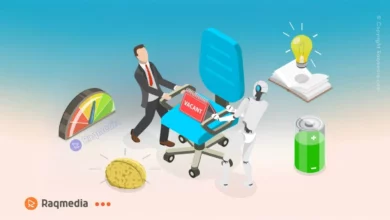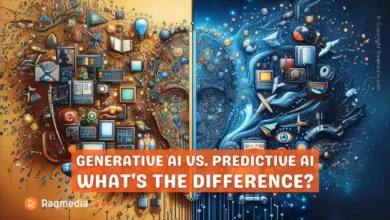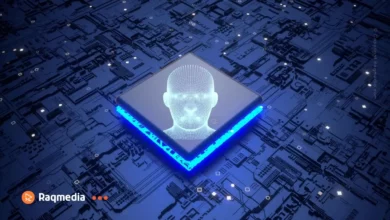In a world where innovation intertwines with artistry, the canvas of creativity expands beyond traditional boundaries thanks to the meteoric rise of Large Language Models (LLMs). These behemoths of artificial intelligence have not only revolutionized conversations with chatbots but have also opened new portals for writers, artists, and creatives to delve into uncharted realms of expression. The transformative power of LLMs in unlocking creativity is akin to bestowing a quill that inscribes dreams onto reality, propelling imagination to unfathomed heights.
From Chatbots to Creative Writing: Unlocking Creativity with Large Language Models
Embraced by visionaries seeking to infuse their craft with technological wizardry, LLMs stand as pillars of inspiration amid a landscape teeming with possibilities. Writers no longer struggle against the white expanse of blank pages; instead, they dance in tandem with algorithms that breathe life into words. Artists blur the lines between man and machine, harnessing the prowess of LLMs to sculpt narratives and visual symphonies that transcend conventional norms.

As these luminaries unite with AI counterparts, shimmering tapestries of enriched artistry emerge—a symbiosis where human ingenuity harmonizes beautifully with computational finesse.
The Rise of Large Language Models in Creative Industries
In recent years, the integration of large language models (LLMs) into various creative industries has sparked a revolution in artistic expression. These advanced AI systems are reshaping the way stories are told, poems are penned, music is composed, and code is written. Creative professionals across different fields are harnessing the power of LLMs to push the boundaries of traditional creativity and venture into uncharted territories of imagination. By embracing these cutting-edge technologies, artists, writers, musicians, and developers are redefining their creative processes and producing innovative works that captivate audiences worldwide.
For instance, novelists are employing LLMs to generate dynamic storylines and develop intricate plot twists that keep readers on the edge of their seats. This fusion of human storytelling prowess with machine-generated suggestions allows writers to explore narrative avenues they might not have considered otherwise. Additionally, poets are using LLMs as virtual muses to craft evocative verses that resonate with emotions on a profound level. Through this collaboration between man and machine, poetry creation transcends conventional norms and opens up new possibilities for artistic expression.
Musicians have also embraced LLMs as collaborators in crafting melodies, harmonies, and lyrics that evoke powerful emotions in listeners. By leveraging the predictive capabilities of these models, composers can experiment with novel musical structures and unconventional sounds that breathe life into their compositions. Furthermore, software developers are tapping into LLMs to streamline the process of writing code by automating repetitive tasks and suggesting optimized solutions. This symbiotic relationship between programmers and AI accelerates software development cycles and fosters innovation in coding practices.
The rise of large language models in creative industries signifies a transformative era where human ingenuity converges with artificial intelligence to elevate artistry to new heights. By exploring uncharted realms of creativity with the aid of LLMs, creative professionals are propelling innovation across storytelling mediums, poetic landscapes, melodic harmonies, and algorithmic codes. The collaborative synergy between humans and machines catalyzed by these advanced AI systems holds immense potential for unlocking unprecedented levels of creativity that inspire awe and wonder in audiences worldwide.
From Words to Worlds: Storytelling with Large Language Models
Large Language Models (LLMs) have become a beacon of innovation in the realm of storytelling, reshaping traditional narratives by weaving together compelling plotlines and characters. By harnessing the vast corpus of textual data they are trained on, LLMs can generate rich story worlds that captivate audiences and challenge conventional storytelling norms. Writers and storytellers are embracing this technology as a powerful tool to fuel their creativity and expand their imaginative horizons.
One fascinating aspect of LLMs is their ability to serve as catalysts for brainstorming and idea generation. When faced with creative blocks or seeking inspiration, writers can input prompts or snippets into LLMs to kickstart their thought process. These models, armed with sophisticated language processing capabilities, churn out diverse possibilities that spark new ideas and narrative directions. In this way, LLMs act not as replacements for human creativity but as collaborative partners that help authors navigate the vast landscape of storytelling possibilities.
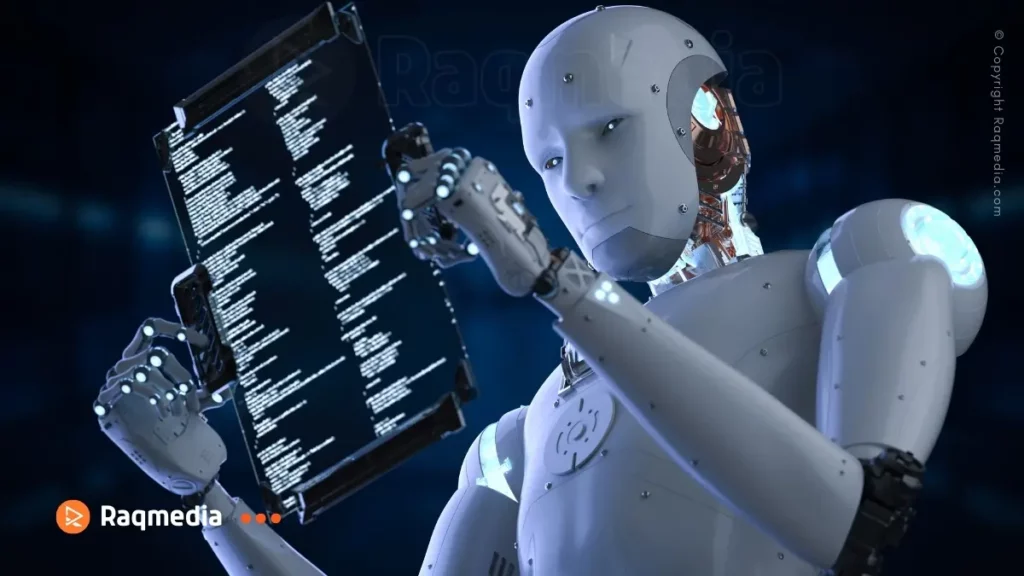
Authors across genres are experimenting with LLMs to explore unconventional narrative structures, experiment with genre-blending, or infuse stories with unexpected twists. The potential for co-creation between human writers and machine intelligence opens up exciting avenues for pushing the boundaries of storytelling. As writers continue to adapt to the ever-evolving landscape of technology-driven creativity, LLMs stand out as transformative tools that empower storytellers to craft immersive worlds from words and transcend traditional storytelling conventions.
Poetry Unbound: Crafting Verses with Large Language Models
In the realm of poetry, where emotions intertwine with words, large language models (LLMs) are revolutionizing the creative process. These sophisticated AI systems delve into the depths of human sentiment and linguistic beauty to craft verses that evoke profound emotions and spark innovative ideas. By analyzing vast amounts of text data, LLMs can generate poetry that resonates with readers on a deep level, blurring the lines between human expression and machine intelligence.
One remarkable aspect of utilizing LLMs in poetry creation is the exploration of the synergy between human emotions and AI-generated content. Poets and writers working alongside these language models often find themselves inspired by the unexpected twists and turns in the poems generated by machines. This collaboration between human creativity and algorithmic ingenuity leads to a fusion of artistic vision and computational prowess, resulting in poems that challenge traditional notions of authorship and poetic innovation.
For example, contemporary poet collaborations with LLMs have produced thought-provoking collections that blend traditional forms with avant-garde structures, pushing the boundaries of what poetry can achieve. These experimental works not only showcase the power of technology in augmenting creative endeavors but also highlight the endless possibilities for artistic expression when humans and machines collaborate harmoniously. The evolving landscape of poetry through the lens of large language models exemplifies how creativity knows no bounds when fueled by advanced technologies.
Harmonies in Code: Music Composition with Large Language Models
In the realm of music composition, the fusion of technology and creativity has reached unprecedented heights with the emergence of large language models (LLMs). Musicians are now harnessing the power of LLMs to craft intricate melodies, harmonies, and lyrics that captivate audiences worldwide. These advanced algorithms not only assist in generating musical elements but also enable artists to explore innovative sounds and experimental genres. By leveraging LLMs, musicians can transcend traditional boundaries in music production and embark on a journey of limitless sonic possibilities.
Don't be afraid to push the boundaries of traditional creativity by experimenting with different LLM-powered tools and applications. For writers, explore the diverse range of narrative prompts generated by language models like GPT-3 to spark fresh story ideas. Artists can use AI-generated text descriptions as inspiration for visual artwork, blending linguistic and visual elements for unique creations. By embracing experimentation, you open up a world of possibilities for creative expression.
One fascinating aspect of using LLMs in music composition is the synergy between technical precision and artistic expression. While algorithms drive the generation of musical components, human creativity infuses soul and emotion into the compositions. This collaborative process highlights how technology can enhance creative endeavors rather than replace human ingenuity. Through the harmonious interplay between machine-generated structures and human interpretation, musicians can create rich and compelling musical landscapes that resonate deeply with listeners.
An exemplary case study involves a collaboration between an avant-garde composer and a team of data scientists to develop an algorithmic symphony using large language models. By inputting themes, motifs, and mood descriptors into the LLM system, they were able to generate complex musical scores that pushed boundaries in contemporary classical music. The resulting composition seamlessly blended intricate rhythms, unconventional harmonies, and ethereal textures, showcasing the potential of LLMs to inspire new forms of artistic expression. This innovative approach exemplifies how technology can serve as a catalyst for artistic innovation, opening doors to uncharted horizons in music creation.
As musicians continue to explore the intersection of technology and artistry through large language models, we witness a paradigm shift in how music is conceived and produced. The transformative impact of LLMs extends beyond mere tool usage; it represents a revolutionary evolution in the creative process itself. By embracing these cutting-edge advancements with an open mind and adventurous spirit, musicians stand at the forefront of a new era where boundless creativity flourishes through synergistic collaborations between human composers and AI systems.
Visualizing Imagination: Artistic Expression with Large Language Models
In the realm of visual arts, large language models (LLMs) are becoming instrumental tools for artists seeking to infuse their creations with unique dimensions of creativity. By bridging the gap between linguistic prowess and visual interpretation, artists are exploring innovative ways to merge text-based outputs from LLMs into their artistic endeavors. For instance, painters might derive inspiration from generated prose or poetry to develop captivating visual narratives that resonate with viewers on a deeper level. This fusion of textual creativity with visual representation opens up a world of possibilities for artists looking to push boundaries and challenge traditional artistic norms.
Collaborations between visual artists and large language models have led to remarkable synergies that showcase the transformative power of integrating technology into artistry. Through this partnership, creators can leverage AI-generated content as a source of inspiration or even as integral components within their artworks. Imagine a digital artist using algorithmically produced descriptions of landscapes to generate otherworldly scenes that captivate audiences with their ethereal beauty. These collaborations highlight not only the capabilities of LLMs in enhancing artistic expression but also the endless possibilities for creative exploration at the intersection of human ingenuity and machine intelligence.
View large language models not as replacements for human creativity but as collaborative partners in your artistic endeavors. Engage in symbiotic relationships with AI systems to enhance your creative process—let machines handle tedious tasks like generating background music compositions while you focus on crafting melodies that evoke emotions in your audience. This collaborative synergy between human intuition and machine intelligence can lead to groundbreaking outcomes in artistry.
Moreover, the interplay between linguistic creativity and visual arts facilitated by LLMs showcases how technology can serve as a catalyst for innovation in the creative process. By combining rich, evocative textual content generated by LLMs with the interpretive nuances of visual artistry, creators can craft multidimensional works that transcend conventional artistic boundaries. Whether through digital artworks infused with machine-generated poetry or mixed-media installations inspired by algorithmic storytelling, artists are embracing the potential of large language models to amplify their imaginative vision and engage audiences in new and captivating ways.
In essence, the integration of LLMs into artistic expression represents a dynamic shift in how creators conceptualize and actualize their visions. By harnessing the collaborative potential between human creativity and machine-generated content, artists are forging new frontiers in artistry that blur distinctions between traditional forms and emerging technologies. As visual artists continue to explore the symbiotic relationship between linguistic narratives and visual representations with large language models, they are reshaping the contours of artistic creation and ushering in a renaissance of boundless creative exploration.
Ethical Considerations in Creative Applications of Large Language Models
As creative professionals harness the power of Large Language Models (LLMs) to augment their artistic expressions, critical ethical considerations come into play. One significant aspect revolves around intellectual property rights when incorporating LLM-generated content into artworks. The question arises: who owns the output created by these AI models? Ensuring clarity on ownership and usage rights becomes imperative to maintain ethical integrity within the creative process. Artists and writers must navigate this terrain thoughtfully, understanding the implications of blending human creativity with machine-generated content.
Transparency and attribution emerge as key pillars in addressing ethical dilemmas linked to LLM applications in artistry. Providing clear attribution to the AI's contribution in producing artistic content not only acknowledges the technology's role but also safeguards against potential disputes regarding authorship and originality. By transparently highlighting the involvement of LLMs in the creative process, artists uphold ethical standards while fostering a culture of respect for intellectual contributions from both human and machine collaborators.
Moreover, responsible usage of AI-generated outputs demands a conscientious approach from creators. While LLMs can fuel innovation and inspire new forms of expression, adherence to ethical guidelines ensures that artistic works do not infringe upon existing copyrights or misappropriate content generated by AI algorithms. Striking a balance between leveraging the capabilities of large language models and upholding ethical conduct underscores the importance of ethics in embracing technological advancements within the realms of creativity. By navigating these ethical considerations with integrity and diligence, creators pave the way for a harmonious integration of human ingenuity and artificial intelligence in pushing boundaries in artistry.
Pushing Boundaries: Future Possibilities with Large Language Models
As large language models (LLMs) continue to advance, the future holds exciting possibilities for pushing the boundaries of creativity across diverse industries. One key aspect is the potential for interdisciplinary collaboration that LLM technology presents. Artists, writers, musicians, and technologists can come together to explore innovative ways of using LLMs in their respective fields. For example, imagine a project where a novelist collaborates with a data scientist to create a novel generated by an LLM but shaped and refined by human creativity—blurring the lines between artificial intelligence and human ingenuity.
Furthermore, as LLM technology evolves, opportunities for innovation expand beyond traditional creative domains. Industries such as marketing, education, healthcare, and more are starting to leverage the capabilities of these models to enhance their processes. For instance, in marketing campaigns, companies could use LLMs to generate personalized content that resonates with individual customers on a deeper level, revolutionizing customer engagement strategies. By tapping into the vast potential of LLMs outside of conventional creative fields, organizations can drive growth and transform how they interact with their audiences.
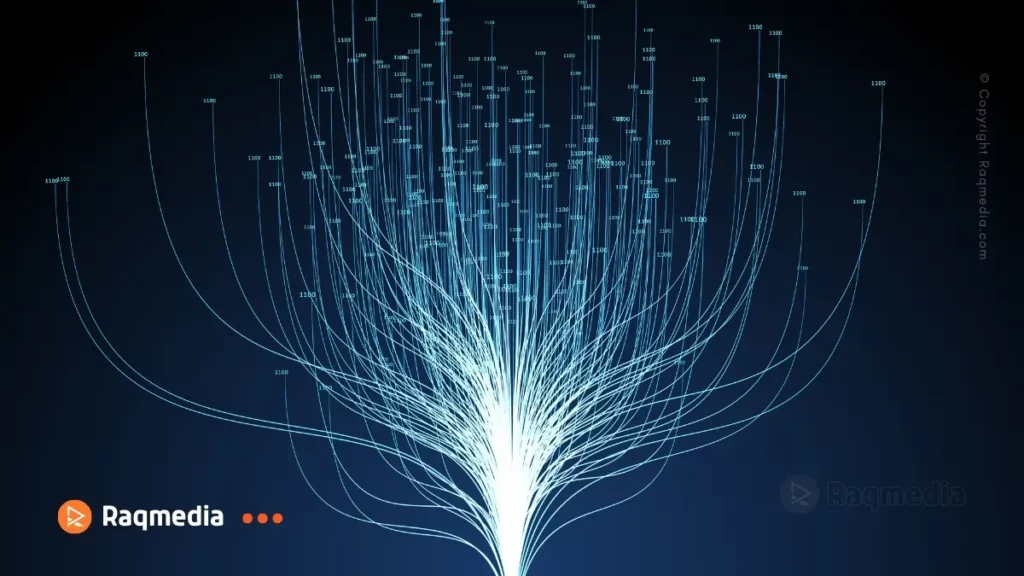
Moreover, envisioning the evolution of creativity through advancements in large language models means embracing new forms of expression and communication. Whether it's exploring virtual reality narratives generated by AI or crafting interactive storytelling experiences powered by LLMs, the fusion of technology and creativity opens doors to uncharted territories. Artists collaborating with AI systems could create immersive installations that respond dynamically to viewers' emotions or preferences—an interactive blend of art and machine intelligence that challenges traditional notions of artistic creation. This dynamic landscape illuminated by LLMs invites creators to think beyond existing paradigms and pioneer novel approaches at the intersection of humanity and technology.
Empowering Creativity: The Human-Machine Creative Synergy
The dynamic interplay between human creatives and large language models (LLMs) ushers in a new era of artistic innovation, where the boundaries between human imagination and machine intelligence blur to cultivate groundbreaking achievements. Collaborative endeavors between writers, artists, musicians, and AI systems infuse artistry with a fresh perspective, enriching creative processes and outcomes. Through this symbiotic relationship, LLMs serve as potent tools that augment human creativity rather than replace it, fostering a harmonious partnership that propels the realms of artistry into uncharted territory.
One compelling example of this synergy can be witnessed in collaborative storytelling projects where authors leverage LLMs to co-create immersive narratives that seamlessly blend human ingenuity with machine-generated content. By combining the structured capabilities of AI with the emotive depth of human storytelling, these collaborations unveil unique storylines and characters that captivate audiences on a whole new level. Such initiatives not only showcase the vast potential of merging human creativity with machine intelligence but also underscore the essence of cooperation in pushing the boundaries of artistic expression.
In the realm of visual arts, digital artists are harnessing the power of LLMs to generate textual prompts that inspire their creative vision and elevate their artworks. By integrating AI-generated text into their pieces, artists create interactive installations or multimedia experiences that invite viewers to contemplate the intersection between language, visuals, and emotions. This fusion of linguistic creativity facilitated by LLMs not only expands the horizons of artistic interpretation but also opens up exciting possibilities for cross-disciplinary collaborations that redefine traditional notions of art creation.
Overall, as we navigate this evolving landscape where human creators collaborate hand-in-hand with intelligent machines, it becomes evident that the true transformative potential lies in embracing this symbiotic relationship. From collaborative music composition to interdisciplinary art projects infused with AI elements, the fusion of human intuition and machine algorithms heralds a future where innovation thrives on collective genius. Consequently, empowering creativity through the harmonious interaction between humans and machines paves the way for unprecedented heights of artistic achievement beyond what either could accomplish alone.
Elevating Artistry Through Innovation
As we delve into the realm where human creativity intertwines with machine intelligence, it becomes evident that large language models (LLMs) have revolutionized the way artistry is conceived and executed. The harmonious synergy between creative professionals and AI systems has opened new vistas of imagination, pushing the boundaries of what is deemed possible in artistic expression.
By harnessing the power of LLMs, writers can transcend traditional storytelling constraints to craft intricate narratives that captivate readers and evoke deep emotional responses. Artists find a new canvas for their visions as they merge linguistic outputs from LLMs into their visual creations, weaving a tapestry of meaning that blurs the lines between human ingenuity and artificial intelligence.
As you harness the power of LLMs in your creative pursuits, prioritize ethical considerations regarding the use of AI-generated content. Ensure transparency and integrity in attributing machine-generated contributions within your works to uphold intellectual property rights and acknowledge the role of technology in shaping your artistry. By maintaining ethical awareness in your creative practice, you not only respect the boundaries of innovation but also contribute responsibly to the evolving landscape of AI-infused creativity.
Moreover, musicians leverage LLMs not just as tools for music composition but as collaborators that infuse technical precision with emotive melodies, resulting in harmonies that resonate with audiences on a profound level. This collaboration does not diminish human creativity but enhances it, offering fresh perspectives and innovative approaches to artistic endeavors. While ethical considerations surrounding intellectual property rights loom large in the landscape of AI-generated content in artistic works, transparency, attribution, and responsible usage remain pivotal tenets in navigating this evolving terrain.
In a future brimming with possibilities fueled by advancements in large language models, interdisciplinary collaborations among creative professionals across various sectors are poised to redefine the very essence of artistry itself. The dynamic interplay between human insight and machine ingenuity paves the way for groundbreaking achievements that blend tradition with innovation seamlessly. As we continue to explore the transformative capabilities of LLMs in unlocking creativity and elevating artistry to unparalleled heights, one thing remains clear – the future belongs to those who embrace innovation as a catalyst for enduring change in the ever-evolving landscape of art and technology.
Elevating Artistry Through Innovation
In a world where boundaries between human creativity and artificial intelligence blur, the potential of large language models (LLMs) to revolutionize creative expression is truly remarkable. From generating captivating stories to crafting intricate poetry and composing soul-stirring music, LLMs have opened new avenues for artists and writers to explore the realms of imagination like never before. The fusion of technology with artistry has ushered in an era where innovation thrives on the synergy between human ingenuity and machine intelligence.
As we reflect on the transformative power of LLMs in unlocking creativity across various artistic domains, it becomes evident that these large language models are not just tools but catalysts for inspiration. By empowering creative minds to push the boundaries of conventional art forms and embark on daring adventures into uncharted territories, LLMs serve as companions in the journey towards unparalleled artistic excellence. The future holds endless possibilities for those who dare to dream big and embrace the collaborative potential of human-machine creative synergy.
Frequently Asked Questions About The Topic with answers: Q & A
1. How can writers benefit from using large language models in their creative process?
– Writers can leverage LLMs to overcome writer's block, generate new story ideas, or even co-create compelling narratives by blending their own creativity with AI-generated content.
2. Are there ethical considerations that artists need to keep in mind when incorporating LLM outputs into their artworks?
– Artists should prioritize transparency, provide proper attribution for AI-generated content, and respect intellectual property rights to ensure responsible usage of LLM contributions in their creations.
3. What role do large language models play in enhancing collaboration among creatives from different disciplines?
– LLMs facilitate interdisciplinary collaboration by offering novel insights, sparking innovative ideas, and fostering a shared creative space where diverse talents can converge harmoniously.
4. Can musicians use large language models to compose original music compositions effectively?
– Musicians can harness the power of LLMs for creating melodies, harmonies, lyrics, or experimenting with unique music styles that resonate with audiences while pushing the boundaries of traditional composition methods.
5. How do large language models contribute to the visual arts industry's evolution through linguistic creativity integration?
– Visual artists can integrate text-based outputs generated by LLMs into their artworks for unconventional interpretations or imaginative storytelling collaborations that bridge the gap between written narratives and visual aesthetics.



